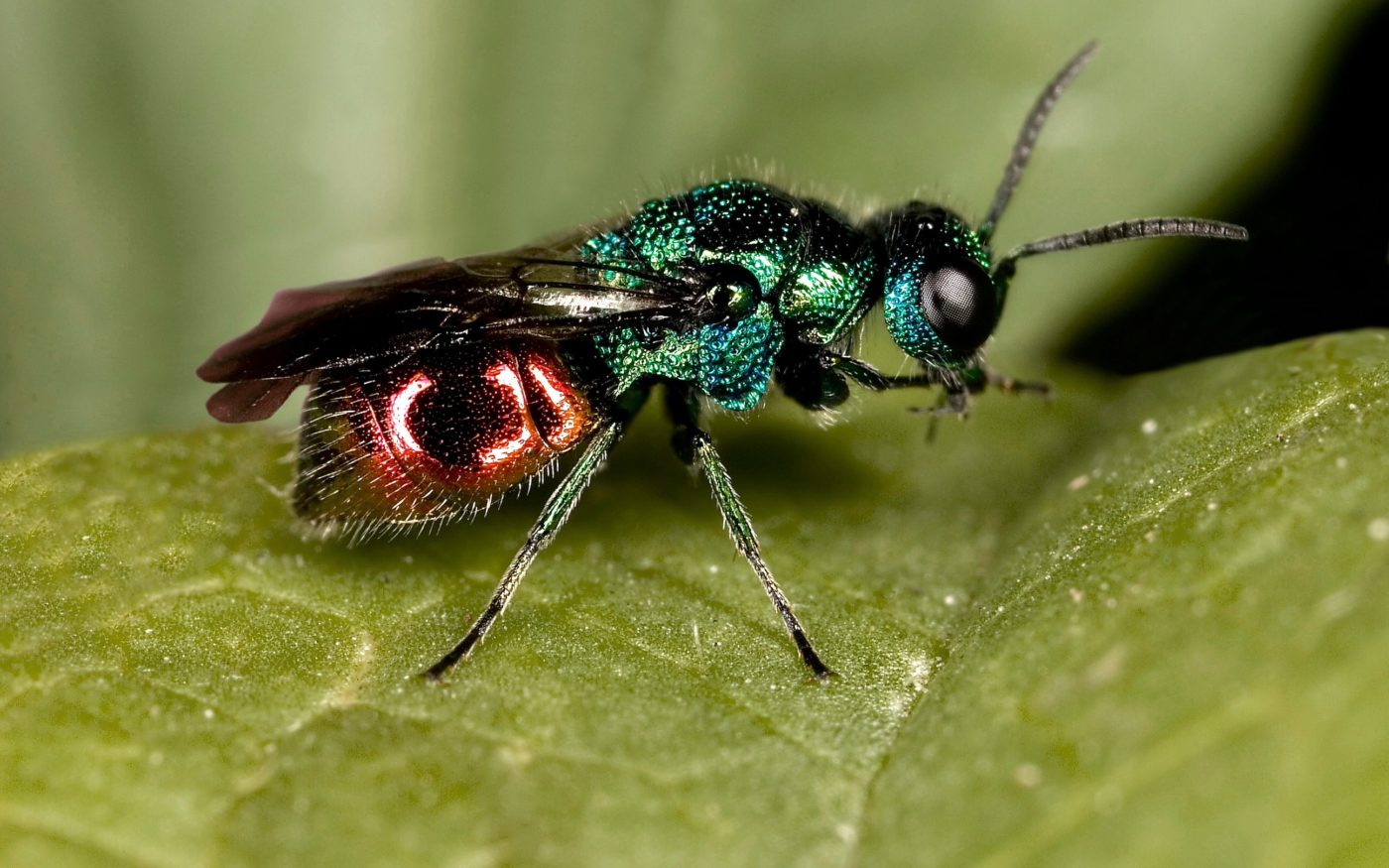Order
Ants, bees, wasps and sawflies
The best-known Hymenoptera are conspicuous insects such as hornets, honeybees, bumblebees, common wasps and wood ants.
There are, however, over 6,500 different species of hymenopteran insects in Britain and a large number of these are solitary in behaviour, unlike the more conspicuous social species that build communal nests. The solitary wasps include a group known as Ruby-Tailed Wasps.
What do they look like?
Ruby-Tailed Wasps are metallic-coloured insects. Their beautiful shiny red, blue, green and bronze colours glitter in the sunshine and their appearance is stunning when seen in close-up.
Chrysis ignita is the commonest of several very similar species of Ruby-Tailed Wasps. The front half of its body (head and thorax) is a shiny green to blue colour, which sometimes has a golden sheen. By contrast, the rear half of the body – the abdomen – is a deep ruby-red colour. At the tip of the abdomen there are four tooth-like structures, sharply pointed and evenly spaced. The underside of the abdomen is concave, which allows the wasp to roll itself into a protective ball-shape if threatened.
Where do they live?
Ruby-Tailed Wasps are often seen running over walls, banks and tree trunks in search of the nests of the insects (usually other wasps and bees) that they parasitize. Chrysis ignita mainly parasitises mason bees and can often be found searching for their nests in old stone walls. They are most commonly found in warm dry places.
Where can they be found?
Ruby-Tailed Wasps are found in most parts of Britain.
When can you see them?
The adult wasps are mainly active from April to September.
Life cycle
The female Ruby-Tailed Wasp searches for nests of other solitary insects – in the case of Chrysis ignita, mason bees – in which eggs have already been laid. The Ruby-Tailed Wasp then lays her eggs in the same nest. When the Ruby-Tailed Wasp larvae hatch, they eat the mason bee larvae and complete their development.
What do they do?
Ruby-tailed wasps are often called Cuckoo Wasps because they lay their eggs in the nests of other insects, usually other wasp and bee species. Ruby-Tailed Wasps have a very hard body cuticle that protects them from the stings of the host species if they are discovered in the act of laying their eggs in the host’s nest. They can roll up into a ball for extra protection.
Did you know?
Although Ruby-Tailed Wasps themselves have a sting it is not usually functional, and there is no venom in most species.

